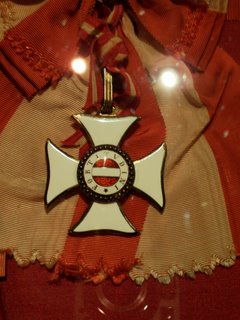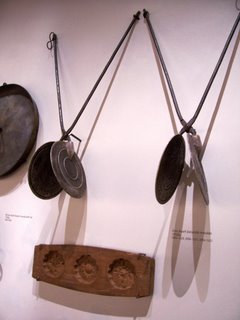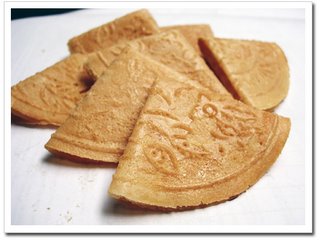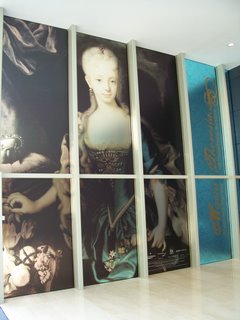
When I visited the exhibition: Maria Theresia - Mother Empress of Hasburg Austria held at the National Museum of Singapore during one of the days in last December, I had felt disappointed that there was no guided tour to the exhibition on that very day.
Perhaps I was too insistent to join the guided tour, I went to make my second visit to the exhibition during one of the recent Saturdays.
I love the guided tour. While it wasn't spectacular or very grand, I like the fact that it gave me a good overview of what I should take note of at the exhibition.
The guide gave a short account to the series of events that had led to the declaration of the Pragmatic Sanctions.
Thanks to the volunteer guide, I became aware that there is a relic being stored in the Reliquary Bust of St Francis Xavier. If you still can't spot it, just simply look closer at what looks like a heart-shaped container found on the chest area of the sculpture.
One part that I enjoyed the guided tour was when the guide gave us a short introduction to the background behind the various paintings that were exhibited in the exhibition. Each of these introductions gave me further insights to the imperial family of Maria Theresia. I heard from the guide that in those days when there was no camera or photography technology, Maria Theresia had requested that her children send her paintings on a regular basis so that she could see how her children and grandchildren had been doing.
I realised that I had spent so much time marvelling at the paintings that I did not take any photograph of most of them. Anyway, for your information, all the photographs that you see on this post are taken by yours truly, using non-flash photography. Several of the photos have been digitally enhanced so that they don't turn out too dark-looking.
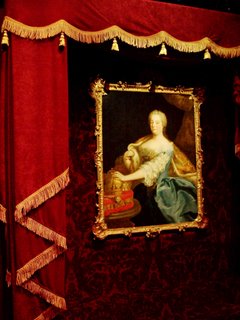 Maria Theresia as Queen of Hungary.
Maria Theresia as Queen of Hungary.Maria Theresia was about 45 years old when the painting was done.
My fascination with how Maria Theresia granted special privileges and rewards to her soldiers led me to take a photo of the following exhibit.
I was also attracted to The insignia of the order of the golden fleece. Its "membership was always strictly limited to members of the Imperial family and the highest of the nobility in Austria and abroad". Make a good guess what the highly stylised "B" from which the gold "fleece" is suspended from represents. If I were to wear this badge in the days of Maria Theresia, it would mean that I was someone from noble background.
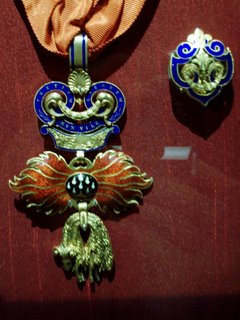 The insignia of the order of the Golden Fleece.
The insignia of the order of the Golden Fleece.The stylised "B" stands for "Burgundy", in remembrance of Duke Phillip III of Burgundy who had established the order in 1430.
When I was at the exhibition for my second visit, my eyes can't seem to take themselves off the Holy Lance. I like the design of it and it radiated a strong aura of character.
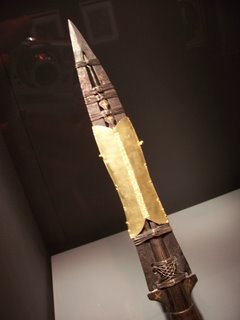
In my post on my first visit to this exhibition, I had made brief mention about one of Maria Theresia's daughters, Marie Antoinette. Here's a bust of her which can be found in the exhibition.
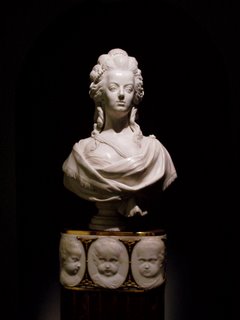
While I was visiting the exhibition for a second time, I decided to make good use of the time to take a closer look at some of the exhibits that I had not taken a closer look at the previous time. The workmanship of some of the exhibits is simply remarkable.
During my second visit to the exhibition, I learnt from the guide that there is something special about this painting of Maria Theresia's husband, Franz Stephan (Francis I). If I remember correctly, this painting has only been restored recently. The painting also gave a more intimate insight to the personality and preferences of Francis I.
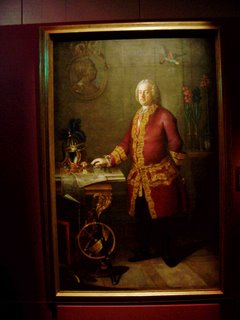
I am glad that I took time to visit the exhibition once again. While the admission ticket didn't come very cheap (it is $8 per adult for admission to this exhibition only), it was worth it considering the fact that I don't have to spend thousand of dollars to fly myself to Austria to view the exhibits.
If you are enticed by my write-up of the exhibition, you may wish to consider visiting this exhibition by tomorrow. It ends on 31 Jan 2007!
Exhibition details:
Mother Theresia - Mother Empress of Habsburg Austria
Venue: National Museum of Singapore, Changing Exhibitions Galleries
Date: 8 Dec 2006 to 31 Jan 2007
Admission Charges: $8 for adults
(Concession's available for students and NSmen.)
**
Also see:
The exhibition at National Museum of Singapore: Maria Theresia
http://www.nationalmuseum.sg/
Reference:
Exhibition brochures

